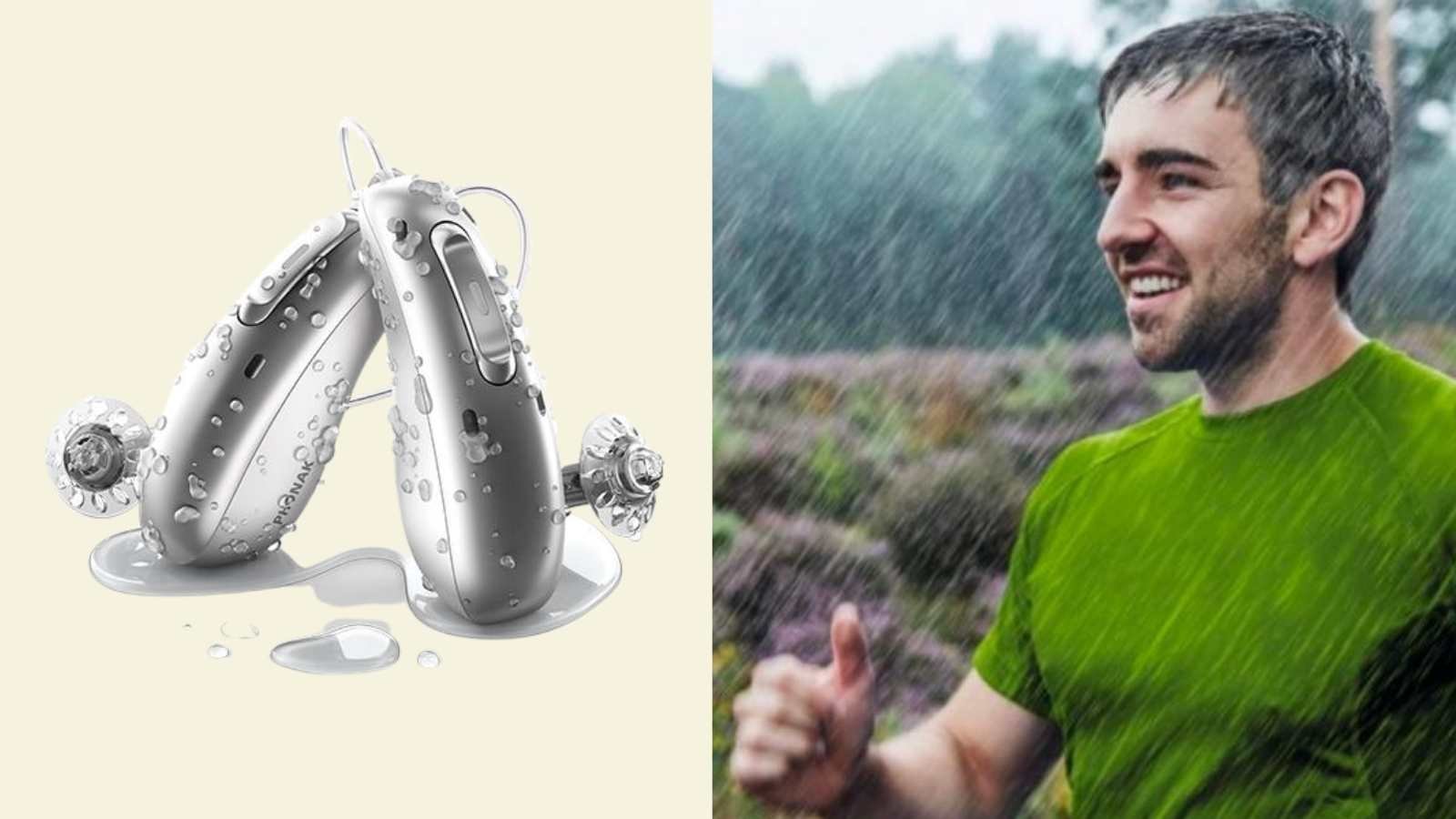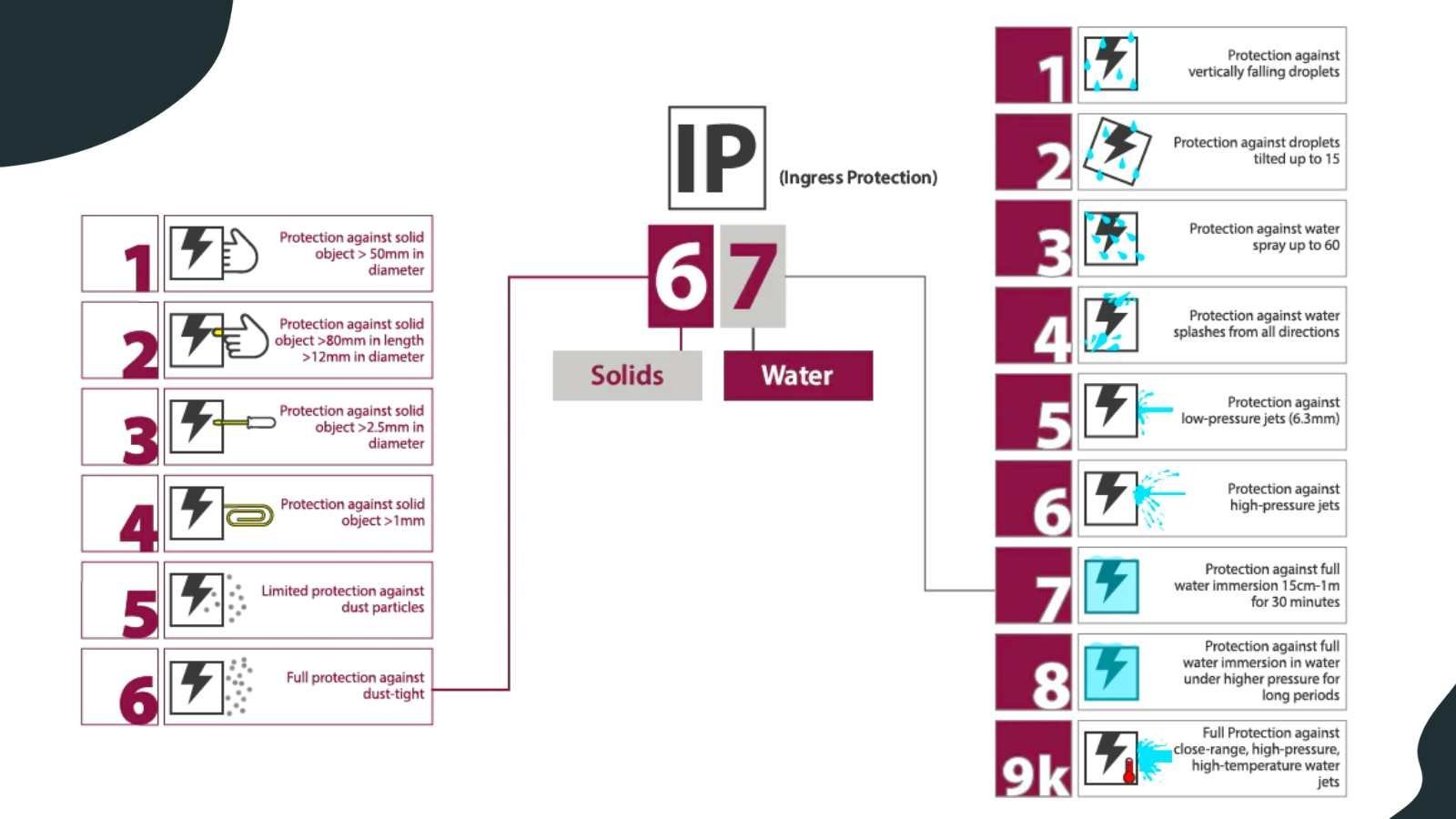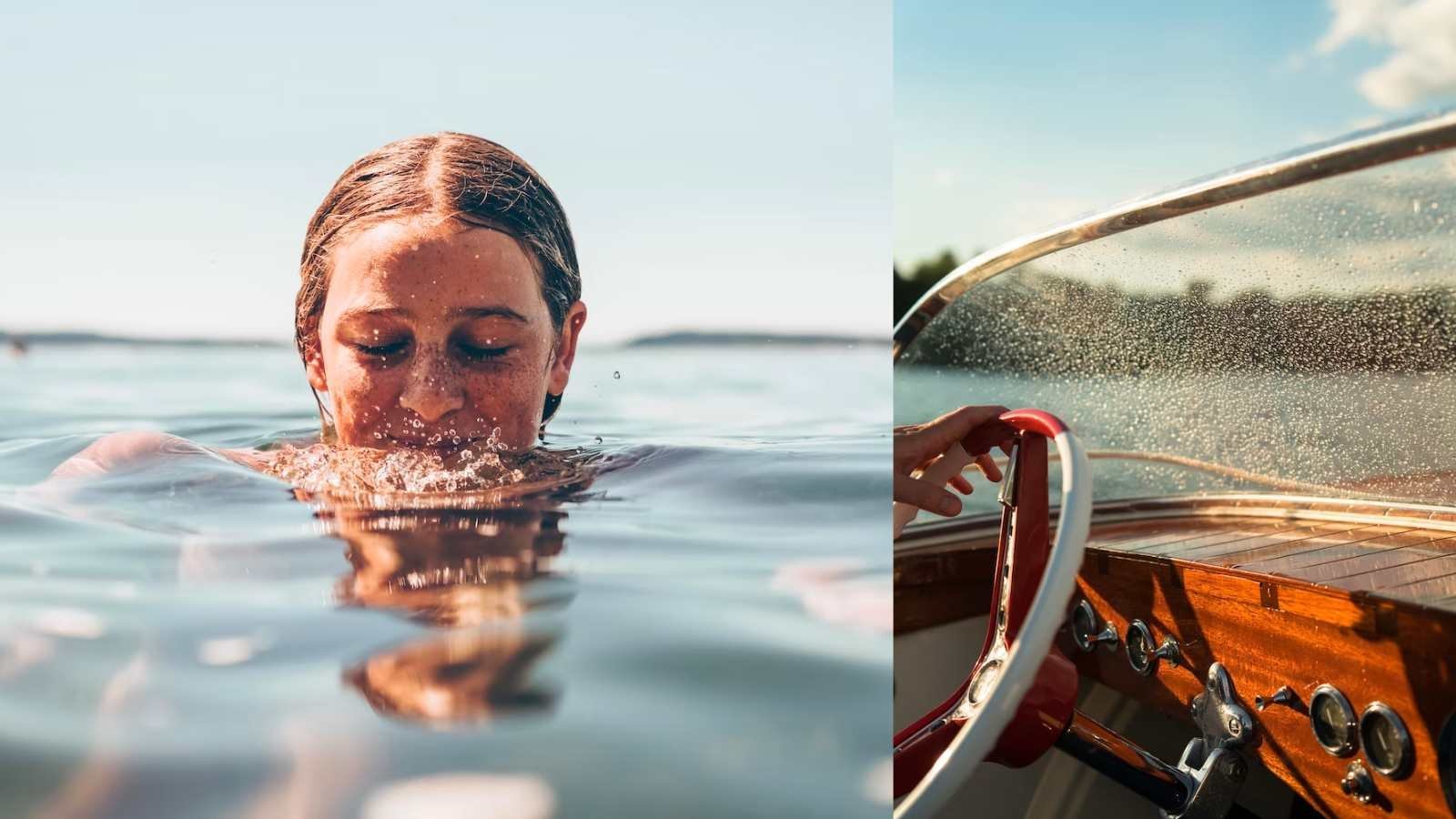I recently spilled a cup of coffee on my Macbook. I quickly mopped up the mess, but it was too late.
I called Apple, and they told me what I already knew: "moisture and technology don't play nice."
If you're like me, a MacBook isn't the most expensive piece of technology you own. My hearing aids cost several thousand dollars, and I definitely don't want them to face a watery end.
Fortunately, most hearing aids (including mine) are water-resistant. In this guide, I'm digging into IP ratings, waterproof hearing aids, and what to do if your hearing aids go overboard.
Let's get into it!
How do waterproof hearing aids work?

Manufacturers get squeamish about the label "waterproof" but the reality is that most premium hearing aids purchased in the last few years have an IP68 rating.
If you wear a hearing aid with an IP68 rating, you probably don't want to go swimming in your hearing aids or drop them to the bottom of a lake, but they should be ok after a quick submersion in the shower or a coffee mug. IP68 devices protect against moister in up to one meter of water for 30 minutes or more.
Some popular hearing aids with an IP68 rating:
Phonak Lumity and Phonak Lumity Life = IP68
ReSound OMNIA = IP68
Oticon More = IP68
Widex Moment Sheer = IP68
Signia Silk, Styletto and Charge&Go = IP68
Starkey Evolv AI = IP68
Lower-cost hearing aids like Lexie's B1 devices have an IP57 rating, and this means they are slightly less water resistant and allow more dust to enter the device. You can still get your Bose hearing aids wet but you shouldn't let them fully submerge if you can avoid it.
What is an IP Rating?
IP is short for Ingress Protection rating. An IP rating is the international standard used to rate the degree of protection or sealing effectiveness in electrical enclosures against the intrusion of objects (like dust) and moister (like coffee).
The first digit in an IP rating shows protection against dust (on a scale of 1-6), and the second digit indicates protection against moisture (on a scale of 1-9).
The top IP rating possible is IP69. No hearing aids on the market currently have an IP69 rating.

Are hearing aids *really* waterproof?

There are hundreds of hearing aids on the market, so you'll need to search for your specific hearing brand's IP rating to know for sure.
If the rating on your device is IP68, you can reasonably assume that water isn't going to take your hearing aids out of commission.
Consider a hearing aid dehumidifier if you live or work around a lot of humidity. This special case extracts moister from your hearing aids each night while you sleep.
What to do if your hearing aids get wet?
For most people, nothing will happen. Your hearing aid should be able to handle it.
If you want to play it safe or if your hearing aid isn't acting right, wipe the device down and remove its battery (if possible). You can let the device dry overnight or put it in a dehumidifier case.
If issues persist, get in touch with your hearing professional or the OTC brand you purchased from.
I hope you found this guide helpful! If you have questions or thoughts, I'd love to hear from you in the comments below.






